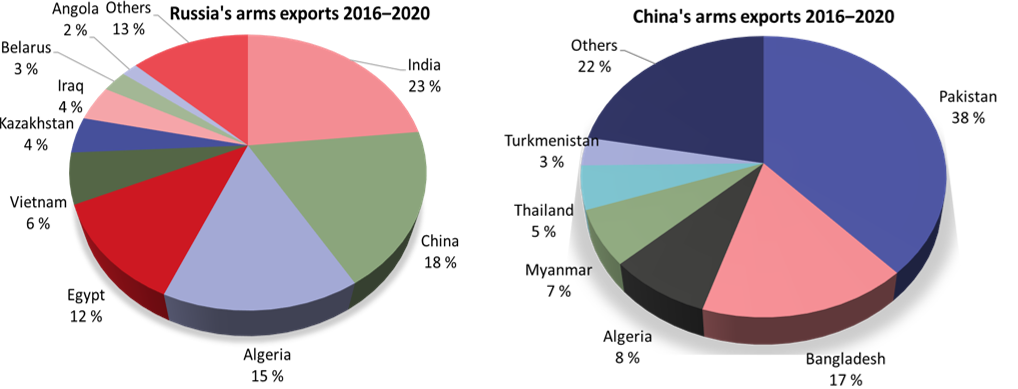BOFIT Viikkokatsaus / BOFIT Weekly Review 2021/11
The recent update of the Stockholm International Peace Research Institute’s SIPRI Arms Transfers Database shows that the volume of the international arms traded during the latest five-year assessment period (2016–2020) was largely unchanged from the previous 2011–2015 period. SIPRI averages arms trade volumes of over several years as annual variations can be huge. The global arms trade appears to have peaked around 2016–2017 and then dropped significantly thereafter.
The arms export trends for some countries, however, defy the general trend. The covid-19 pandemic has also depressed the arms exports of several of the largest arms producers. For example, an article posted on the Russian RBC website found that Russian arms exports apparently declined last year by about 11 % to $11.5 billion. China’s arms exports have declined for several years. Compared to SIPRI’s previous five-year assessment period, the United States, France and Germany all increased their exports during 2016–2020. In combination, these following countries accounted for about three-quarters of global arms exports in the past five years: US (37 %), Russia (20 %), France (8 %), Germany (6 %) and China (5 %).
The growth in arms imports was fastest in the Middle East, where arms imports grew by 25 % during 2016–2020. The biggest arms importer in the period was Saudi Arabia with 13 % of imports. India, which accounted for 10 % of global arms imports, saw its imports decrease by a third during the latest assessment period. This had knock-on effects not just for Russian arms exports, but the US as well.
Russia’s top customers for arms exports during 2016–2020 were India (23 % of exports), China (18 %), Algeria (15 %), Egypt (12 %) and Vietnam (6 %). These countries are also traditionally Russia’s biggest arms customers. Chinese arms exports focused as always on other countries in Asia. During 2016–2020, China’s top customers were Pakistan (38 % of Chinese arms exports), Bangladesh (17 %), Algeria (8 %) and Myanmar (7 %).
Russia had a wider geographic distribution of arms exports in 2016–2020 than China (% of total arms exports)

Sources: SIPRI and BOFIT.